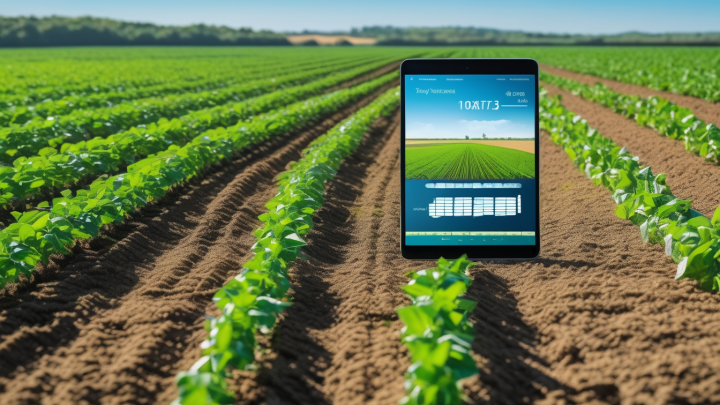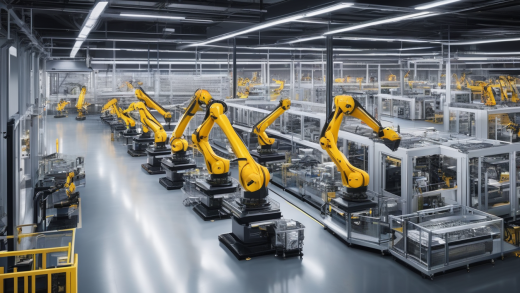In the rapidly evolving world of agriculture, artificial intelligence (AI) is emerging as a game-changer, transforming the way we grow food and manage resources. Imagine a farm where every decision is backed by data, where crops are monitored in real-time, and where sustainability is not just a goal but a reality. This is not science fiction; this is the power of AI in agriculture.
Farmers are facing numerous challenges today, from unpredictable weather patterns to increasing demand for food. By harnessing the capabilities of AI, they can enhance crop yields, optimize resource use, and implement sustainable practices that not only benefit their bottom line but also the environment. The integration of AI technologies allows for a more precise approach to farming, making it possible to tailor strategies to specific conditions and needs.
AI technologies, such as machine learning, computer vision, and robotics, are being utilized in various aspects of agriculture. For instance, machine learning algorithms can analyze vast amounts of data to predict crop performance, while computer vision systems can assess plant health through images captured by drones. Robotics can automate tedious tasks, allowing farmers to focus on more strategic aspects of their operations.
As we delve deeper into the world of AI in agriculture, it becomes clear that this technology is not just about increasing productivity; it’s about fostering a sustainable future. By reducing waste, conserving water, and minimizing chemical usage, AI is paving the way for a more environmentally friendly approach to farming. In the following sections, we will explore these technologies and their applications in greater detail, revealing how AI is transforming the agricultural landscape.
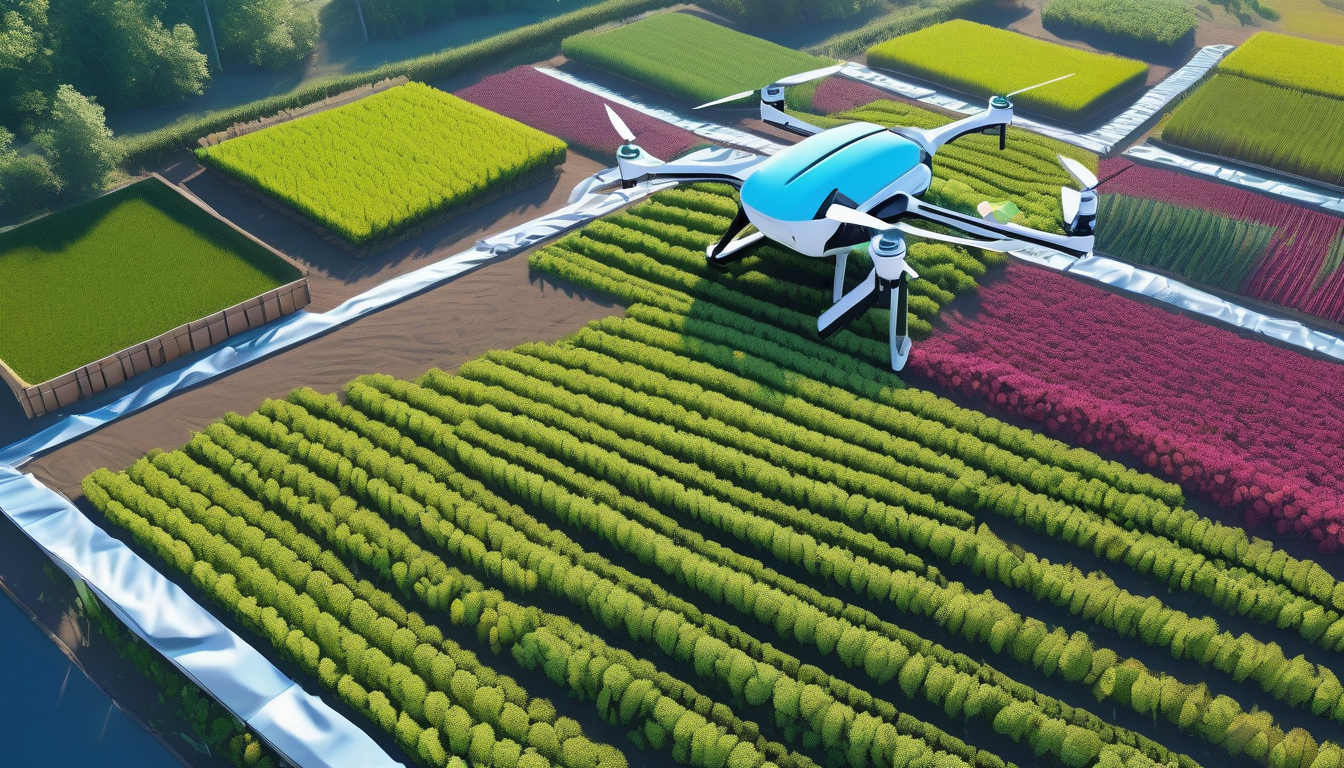
Understanding AI Technologies in Agriculture
Artificial Intelligence (AI) is making waves in the agricultural sector, and it’s not just a passing trend. The integration of AI technologies is fundamentally changing how farmers operate, leading to increased efficiency and productivity. At the heart of this transformation are several key technologies that work together to create a smarter farming ecosystem. These include machine learning, computer vision, and robotics. Each of these technologies plays a unique role in optimizing farming practices.
Machine learning algorithms analyze vast amounts of data to identify patterns and make predictions about crop performance. For instance, farmers can use machine learning to determine the best planting times or identify which crops will thrive in specific conditions. This not only helps in maximizing yields but also reduces waste and enhances resource management.
Another critical technology is computer vision, which allows machines to interpret and understand visual data from the environment. With the help of high-resolution cameras and sensors, farmers can monitor crop health and detect issues such as nutrient deficiencies or pest infestations early on. This proactive approach means that farmers can address problems before they escalate, ensuring healthier crops and better yields.
Then there’s robotics, which is revolutionizing the way tasks are performed on farms. From automated tractors to drones, robotics enhances efficiency and reduces the reliance on manual labor. For example, drones equipped with AI can survey large fields in a fraction of the time it would take a human, providing invaluable insights into crop health.
In summary, the convergence of these AI technologies is not just about making farming easier; it’s about creating a sustainable future. By leveraging machine learning, computer vision, and robotics, farmers can make informed decisions that benefit both their operations and the environment. As these technologies continue to evolve, the potential for even greater advancements in agriculture is limitless.
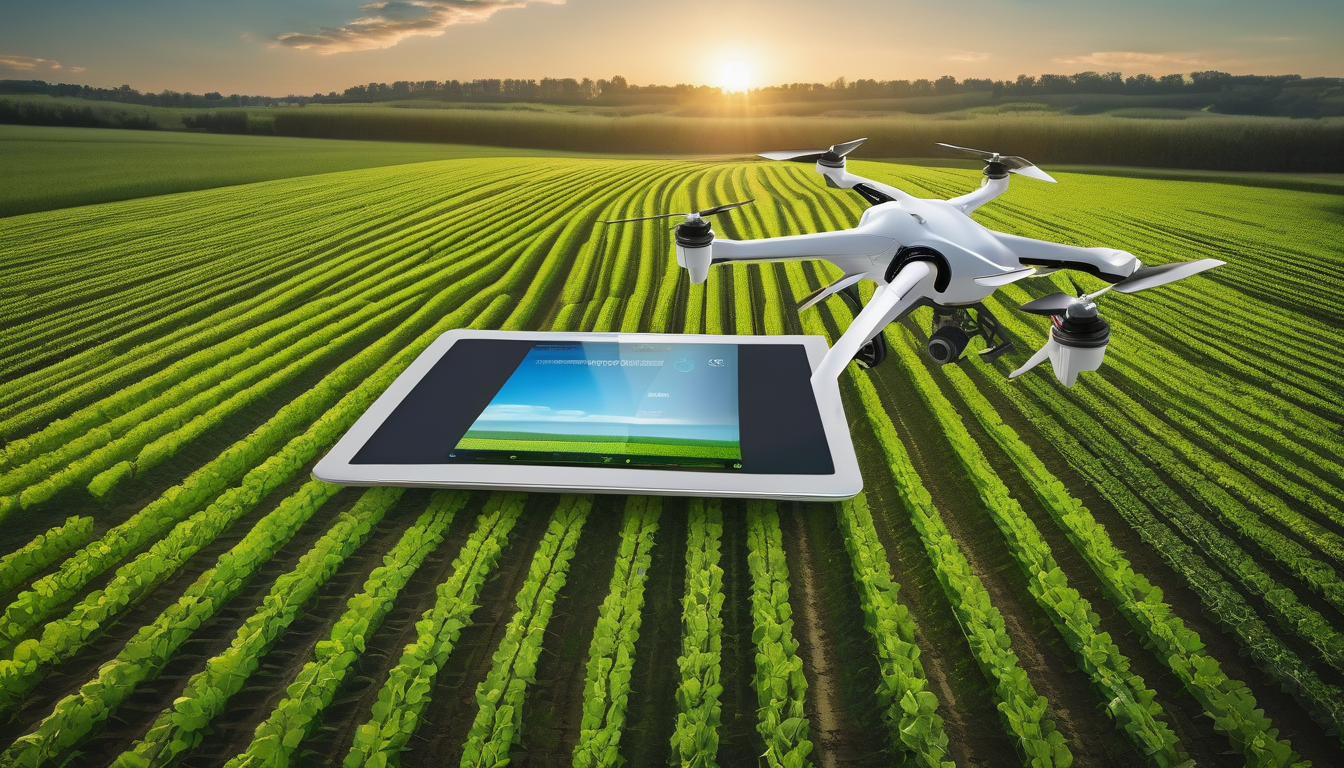
Precision Farming and Data Analytics
Precision farming is like giving farmers a superpower, enabling them to make informed decisions that lead to better crop yields and resource management. By leveraging AI-driven data analytics, farmers can gather and analyze vast amounts of data, turning raw numbers into actionable insights. Imagine being able to predict the best time to plant your seeds or knowing exactly how much water your crops need—this is the magic of precision farming!
At the heart of this transformation lies a variety of technologies that help in collecting data. These include satellite imagery, soil sensors, and weather stations. Each of these tools plays a crucial role in monitoring the agricultural landscape. For instance, soil sensors can provide real-time information about moisture levels, allowing farmers to optimize irrigation schedules. This not only saves water but also ensures that crops receive the right amount of hydration when they need it the most.
But how does all this data lead to better decision-making? Well, it’s all about analytics. By analyzing data from various sources, farmers can identify patterns and trends that inform their practices. For example, if data shows that certain crops thrive under specific weather conditions, farmers can adjust their planting schedules accordingly. This type of data-driven decision-making is what sets modern farmers apart from traditional methods.
In addition, AI can help farmers assess their crop management strategies. With predictive analytics, they can forecast future yields based on historical data, making it easier to plan for the upcoming season. This predictive capability is essential for resource allocation, ensuring that every seed planted is a step toward maximizing productivity.
In summary, precision farming powered by data analytics is revolutionizing agriculture. By embracing these advanced technologies, farmers can not only improve their yields but also contribute to a more sustainable future. After all, in a world where every drop of water counts and every seed matters, making informed choices is the key to success.
Crop Monitoring and Disease Detection
In the world of agriculture, crop monitoring and disease detection are crucial for ensuring healthy yields and minimizing losses. With the advent of artificial intelligence, farmers can now monitor their crops in real-time, allowing for timely interventions that can save entire harvests. Imagine being able to spot a potential issue in your field before it spirals out of control—this is the power that AI brings to the table.
AI technologies, such as machine learning and computer vision, are revolutionizing how farmers assess crop health. These tools analyze vast amounts of data from various sources, including satellite imagery and ground sensors, to provide actionable insights. For instance, they can identify patterns that indicate stress in plants, such as changes in color or growth rate. This means farmers can address problems like nutrient deficiencies or pest infestations before they escalate.
One of the most exciting developments in this field is the use of drones equipped with AI capabilities. These flying machines can cover large areas in a fraction of the time it would take a human. They capture high-resolution images that reveal the health status of crops, enabling farmers to focus their efforts where they are needed most. The images collected can be processed using AI algorithms to detect diseases early, which is vital for effective management.
Moreover, the integration of AI in crop monitoring systems allows for predictive analytics, which can forecast potential disease outbreaks based on historical data and environmental conditions. This proactive approach not only enhances productivity but also reduces the reliance on chemical treatments, promoting a more sustainable farming model.
In summary, AI-driven crop monitoring and disease detection are game-changers in agriculture. They empower farmers with the tools necessary to make informed decisions, ultimately leading to healthier crops and a more sustainable future for agriculture.
Remote Sensing and Drones
In the modern agricultural landscape, have emerged as game-changers. Imagine soaring above vast fields, capturing high-resolution images that reveal the hidden secrets of crop health. These innovative tools allow farmers to monitor their fields with unprecedented accuracy, identifying issues before they escalate into major problems. With the ability to collect data from multiple angles and at different times, drones provide a comprehensive view of the land.
How does it work? Drones equipped with advanced sensors and cameras can gather information on various factors affecting crop growth, such as soil moisture, nutrient levels, and pest infestations. This data is then processed using AI algorithms, transforming raw information into actionable insights. Farmers can make informed decisions based on real-time data, leading to improved yields and reduced waste.
One of the remarkable benefits of using drones in agriculture is the ability to cover large areas quickly. Traditional scouting methods can be time-consuming and labor-intensive, but with drones, farmers can survey hundreds of acres in just a few hours. This efficiency not only saves time but also allows for more frequent monitoring, which is crucial for early disease detection and management.
Moreover, the integration of remote sensing technology with AI can lead to significant cost savings. By pinpointing exactly where interventions are needed, farmers can apply resources more effectively. For instance, instead of blanket spraying pesticides or fertilizers across an entire field, they can target specific areas that require attention. This precision reduces the overall use of chemicals, promoting a healthier ecosystem.
In summary, remote sensing and drones are revolutionizing the agricultural sector by providing farmers with the tools they need to enhance productivity while ensuring sustainability. As technology continues to evolve, the potential for these innovations to transform farming practices is limitless.
Predictive Analytics for Yield Forecasting
In the realm of agriculture, predictive analytics is becoming a game-changer for farmers looking to maximize their crop yields. By harnessing the power of historical data, farmers can forecast future outcomes with impressive accuracy. Imagine having a crystal ball that not only tells you how much you can expect to harvest but also guides you on the best practices to achieve that yield. This is the reality that predictive analytics offers.
At its core, predictive analytics involves analyzing a variety of factors that influence crop production, including:
- Weather patterns
- Soil conditions
- Pest and disease prevalence
- Crop rotation history
By collecting and analyzing this data, farmers can make informed decisions about what to plant and when to plant it. For instance, if a farmer knows that a particular crop thrives in cooler temperatures and is forecasted to have a mild spring, they can plan their planting schedule accordingly. This proactive approach not only boosts productivity but also enhances resource allocation, ensuring that every seed sown has the best chance of success.
Moreover, predictive analytics can be integrated with other AI technologies to create a comprehensive farming strategy. For example, when combined with machine learning algorithms, the system can continuously improve its predictions based on real-time data. This means that as conditions change, farmers receive updated insights, allowing them to adapt quickly and effectively.
Ultimately, the use of predictive analytics in yield forecasting is not just about increasing profits; it’s about cultivating a sustainable future for agriculture. By understanding and anticipating the needs of their crops, farmers can reduce waste and optimize their inputs, leading to a healthier ecosystem. As technology continues to evolve, the potential for predictive analytics in farming will only grow, making it an indispensable tool for modern agriculture.
Automation in Farming Practices
Automation in farming practices is not just a trend; it’s a revolution that is reshaping the agricultural landscape. Imagine a farm where robots handle the heavy lifting, drones monitor crop health, and AI systems analyze data to make informed decisions. Sounds futuristic, right? Well, it’s happening right now! With the integration of advanced technologies, farmers can streamline their operations, reduce labor costs, and enhance productivity like never before.
At the heart of this transformation are robotics and automated machinery. These innovations allow for tasks that traditionally required significant human effort to be completed with precision and speed. For instance, consider the role of autonomous tractors and harvesters. They can operate around the clock, ensuring that crops are planted and harvested at optimal times. This not only maximizes yield but also minimizes the risk of labor shortages, which can be a significant challenge in agriculture.
Moreover, automation is not limited to just planting and harvesting. It extends to various aspects of farming, such as:
- Soil Preparation: Automated plowing and tilling equipment can prepare fields more efficiently than manual labor.
- Planting: Precision seeders ensure that seeds are planted at the right depth and spacing, promoting healthy growth.
- Irrigation: Smart irrigation systems can adjust water supply based on real-time soil moisture levels, conserving water.
By leveraging these technologies, farmers can collect and analyze data that informs their practices. For example, with AI-driven analytics, they can predict the best times for planting and harvesting based on weather patterns and soil conditions. This level of insight allows for more strategic decision-making, leading to healthier crops and better resource management.
In conclusion, automation in farming practices is not just about replacing human labor; it’s about enhancing efficiency and sustainability. As farmers embrace these advancements, they are not only improving their productivity but also paving the way for a more sustainable future in agriculture.
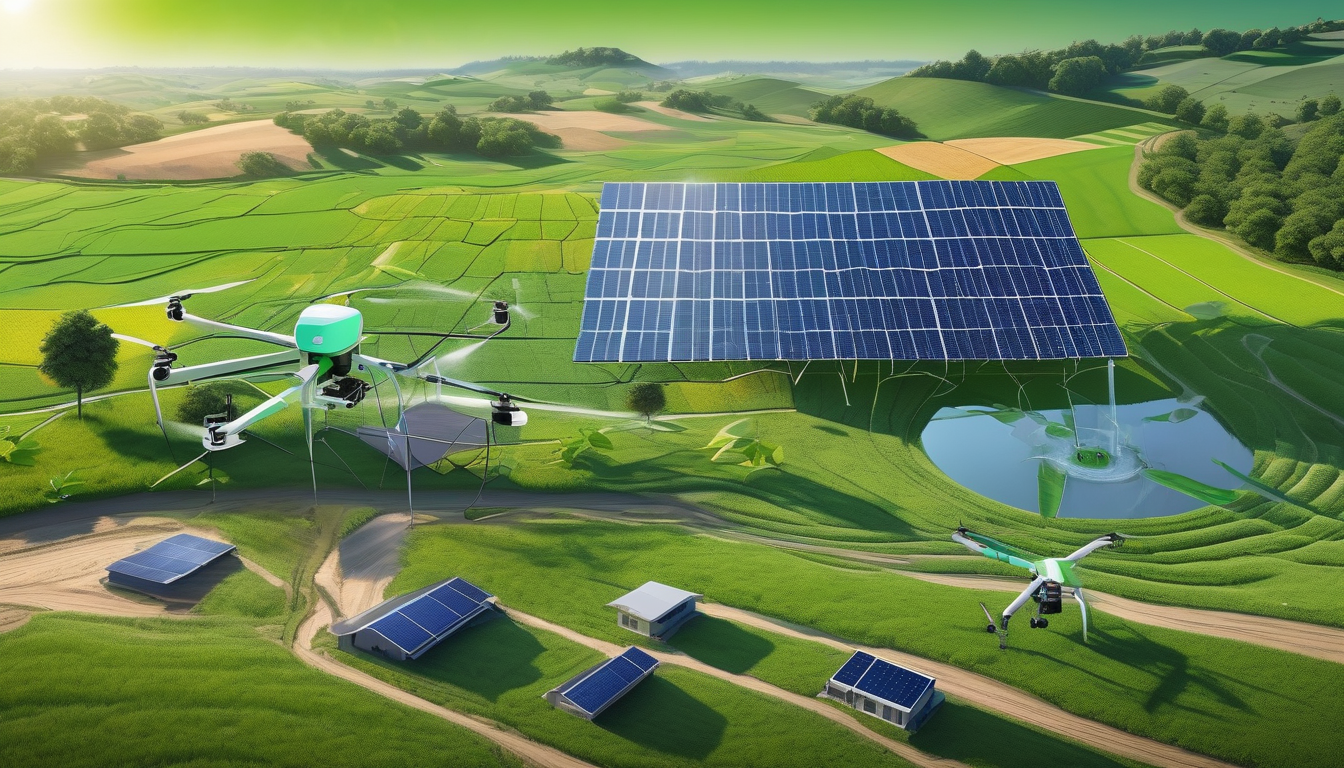
Environmental Impact and Sustainability
In today’s world, where environmental concerns are at the forefront, the role of artificial intelligence (AI) in promoting sustainability in agriculture cannot be overstated. AI technologies are not just about increasing productivity; they also play a crucial role in reducing waste and conserving resources. By integrating AI into farming practices, we can create a harmonious balance between agricultural output and environmental stewardship.
One of the most significant benefits of AI in agriculture is its ability to optimize water management. Traditional irrigation methods often lead to overuse of water, which can deplete local resources. However, AI systems can analyze weather forecasts and soil conditions to determine the most efficient irrigation schedules. This smart water management not only conserves water but also ensures that crops receive the right amount of moisture at the right time. For instance, a study showed that farms using AI-driven irrigation systems reduced their water usage by up to 30%.
Moreover, AI technologies are instrumental in minimizing the use of chemical inputs such as pesticides and fertilizers. By providing precise application recommendations based on real-time data, farmers can significantly cut down on unnecessary chemical usage. This not only benefits the environment by reducing runoff and pollution but also promotes healthier ecosystems. For example, a farm utilizing AI for pest management reported a 40% reduction in pesticide use while maintaining crop health.
In summary, the integration of AI in agriculture is a game-changer for sustainability. It allows farmers to make informed decisions that not only enhance productivity but also protect our natural resources. As we continue to explore the potential of AI, it’s essential to focus on practices that foster a sustainable agricultural future for generations to come.
Water Management and Irrigation Optimization
Water management is a critical aspect of agriculture, and with the advent of artificial intelligence, farmers are now equipped to optimize their irrigation practices like never before. Imagine being able to predict the exact amount of water your crops need, tailored to the unique conditions of your land. This is not just a dream; it’s a reality thanks to AI technologies that analyze data from various sources, including weather forecasts, soil moisture levels, and crop requirements.
AI systems can process vast amounts of data to create irrigation schedules that are not only efficient but also environmentally friendly. By utilizing sensors placed in the fields, farmers can receive real-time updates on soil conditions, allowing them to adjust their watering practices accordingly. This means less water wastage and healthier crops. For instance, a farmer can set up a system that triggers irrigation only when the soil moisture drops below a certain threshold, ensuring that plants receive just the right amount of water.
Furthermore, AI-driven irrigation systems can learn from historical data. By analyzing past weather patterns and crop responses, these systems can forecast future water needs, helping farmers make informed decisions. This predictive capability is invaluable, especially in regions prone to drought or unpredictable weather.
To illustrate the impact of AI on water management, consider the following table:
| Traditional Methods | AI-Driven Methods |
|---|---|
| Fixed irrigation schedules | Dynamic irrigation based on real-time data |
| High water wastage | Optimized water usage |
| Manual monitoring of soil moisture | Automated sensor monitoring |
| Inconsistent crop health | Improved crop yield and health |
In conclusion, the integration of AI in water management not only enhances efficiency but also promotes sustainability in agriculture. By optimizing irrigation practices, farmers can conserve precious water resources while ensuring their crops thrive. This is a win-win situation for both the farmers and the environment, making AI a game-changer in the agricultural sector.
Reducing Chemical Usage
In the quest for sustainable farming, has become a critical goal for many farmers. Traditional farming practices often rely heavily on pesticides and fertilizers, which can lead to detrimental effects on the environment and human health. However, with the advent of AI technologies, farmers can now make more informed decisions about chemical applications, significantly minimizing their reliance on these substances.
AI systems analyze vast amounts of data, including soil health, weather conditions, and pest populations, to provide precise recommendations for chemical use. This means that instead of a blanket approach—where chemicals are sprayed across entire fields—farmers can apply them only where necessary. For instance, AI can identify specific areas within a field that are under threat from pests, allowing for targeted treatment. This not only reduces the total amount of chemicals used but also helps maintain the ecological balance in farming environments.
Imagine walking through a field where every plant is thriving, not because of excessive chemical applications, but due to smart, data-driven decisions. This is the future that AI is helping to create. By leveraging machine learning and predictive analytics, farmers can forecast pest outbreaks and disease threats before they escalate, allowing for timely interventions that use fewer resources.
Moreover, reducing chemical usage has a ripple effect on the entire ecosystem. It leads to healthier soil, cleaner water sources, and a reduction in the harmful runoff that often accompanies traditional farming. The table below illustrates the benefits of reduced chemical usage:
| Benefit | Description |
|---|---|
| Healthier Soil | Less chemical runoff improves soil microbiome and fertility. |
| Cleaner Water | Reduced pesticide and fertilizer runoff leads to cleaner water sources. |
| Cost Savings | Targeted chemical use lowers costs for farmers. |
In conclusion, the integration of AI in agriculture is not just about boosting productivity; it’s also about fostering a sustainable future. By reducing chemical usage, farmers can protect the environment while still achieving high yields, proving that it’s possible to have both productivity and sustainability coexist.
Frequently Asked Questions
- How does AI improve crop yields?
AI enhances crop yields by analyzing data from various sources, such as weather patterns and soil conditions. This allows farmers to make informed decisions about planting, watering, and harvesting, ultimately leading to healthier crops and increased productivity.
- What role do drones play in agriculture?
Drones equipped with AI technology provide farmers with high-resolution images and real-time data on crop health. This enables precise monitoring, allowing for early detection of diseases and pests, which can save time and resources.
- Can AI help reduce environmental impact?
Absolutely! AI promotes sustainable practices by optimizing resource use, such as water and fertilizers. This leads to reduced waste and a lower carbon footprint, making farming more environmentally friendly.
- What is precision farming?
Precision farming is a modern agricultural practice that uses AI-driven data analytics to enhance farming efficiency. It involves collecting detailed data about crops and soil to make precise management decisions, improving overall farm productivity.
- How does predictive analytics benefit farmers?
Predictive analytics uses historical data to forecast future crop yields. This helps farmers plan better, allocate resources efficiently, and make informed decisions about their farming strategies, ultimately leading to increased profitability.
- What are the benefits of smart water management?
Smart water management systems powered by AI optimize irrigation schedules based on real-time data, helping farmers conserve water and reduce costs. This ensures that crops receive the right amount of water at the right time, promoting healthier growth.
